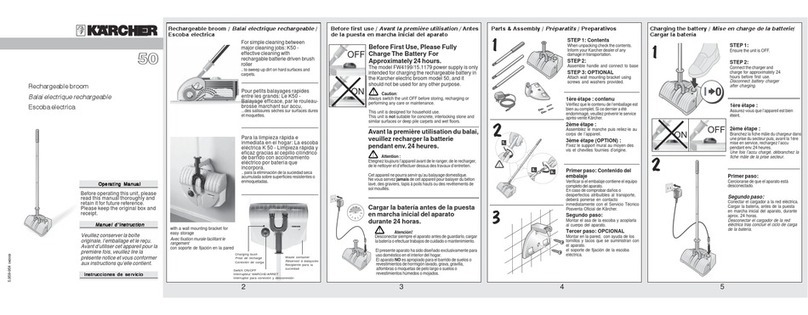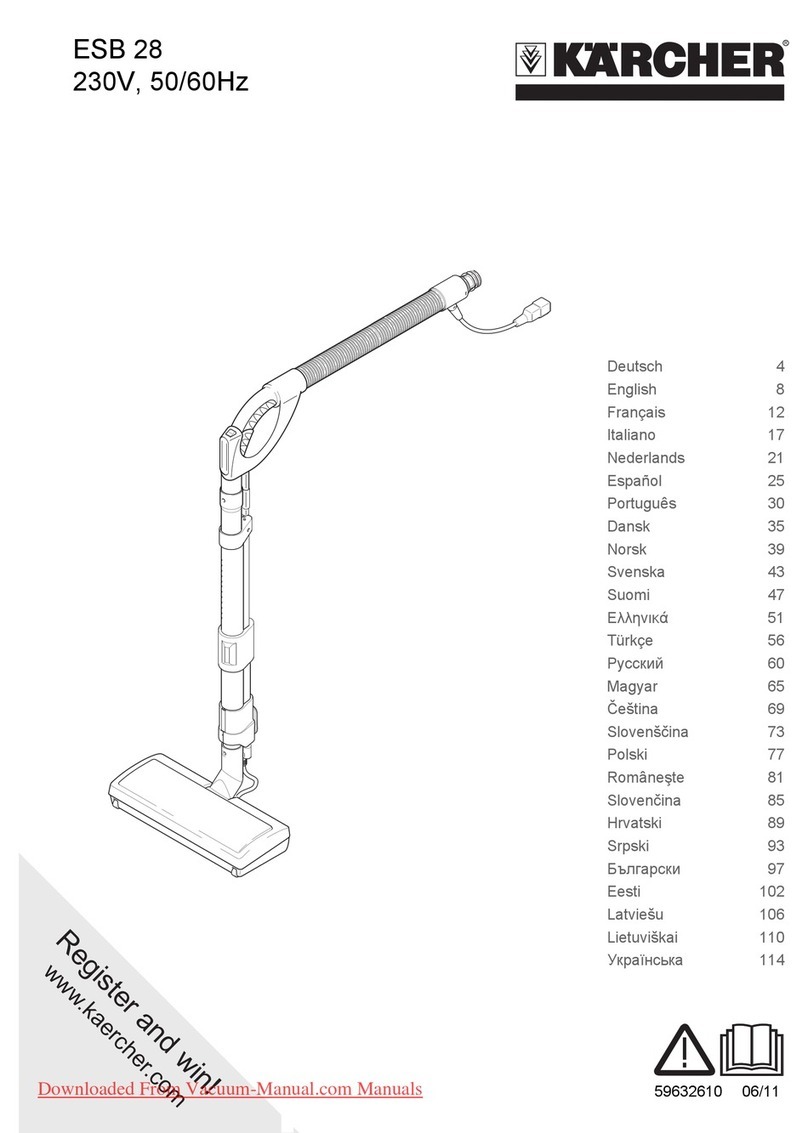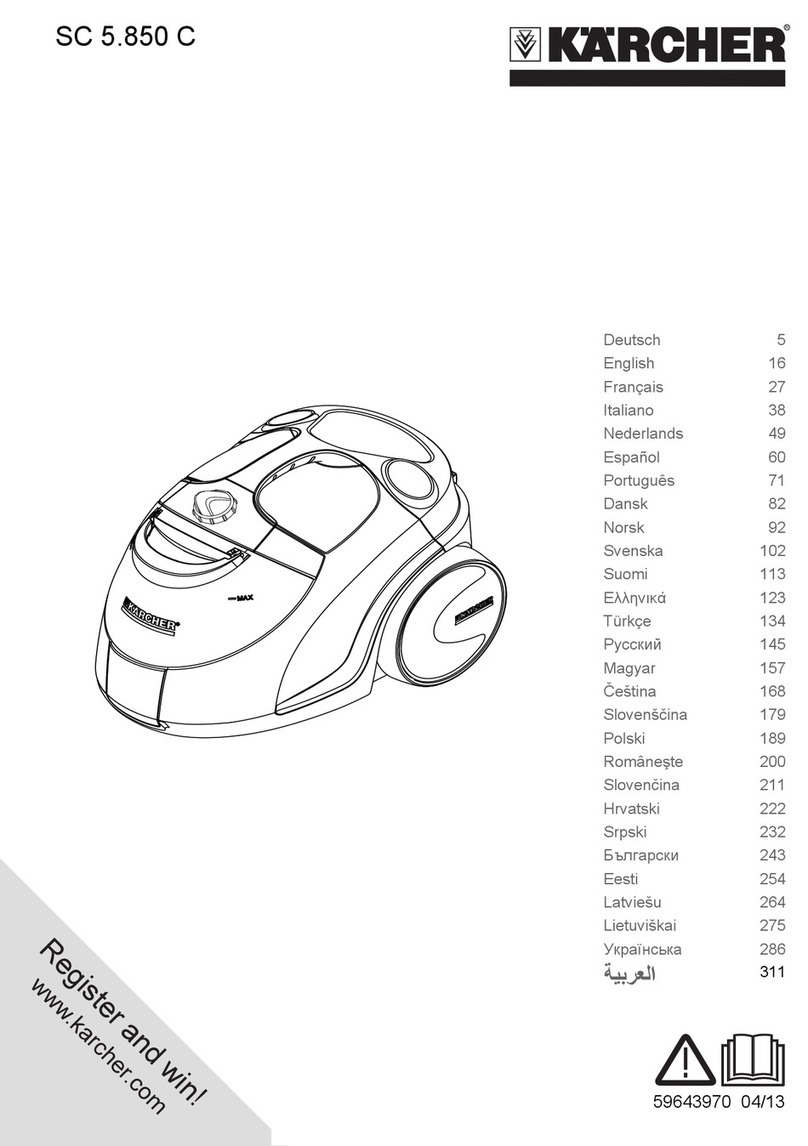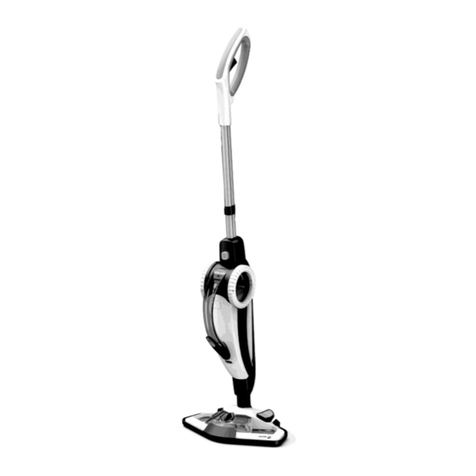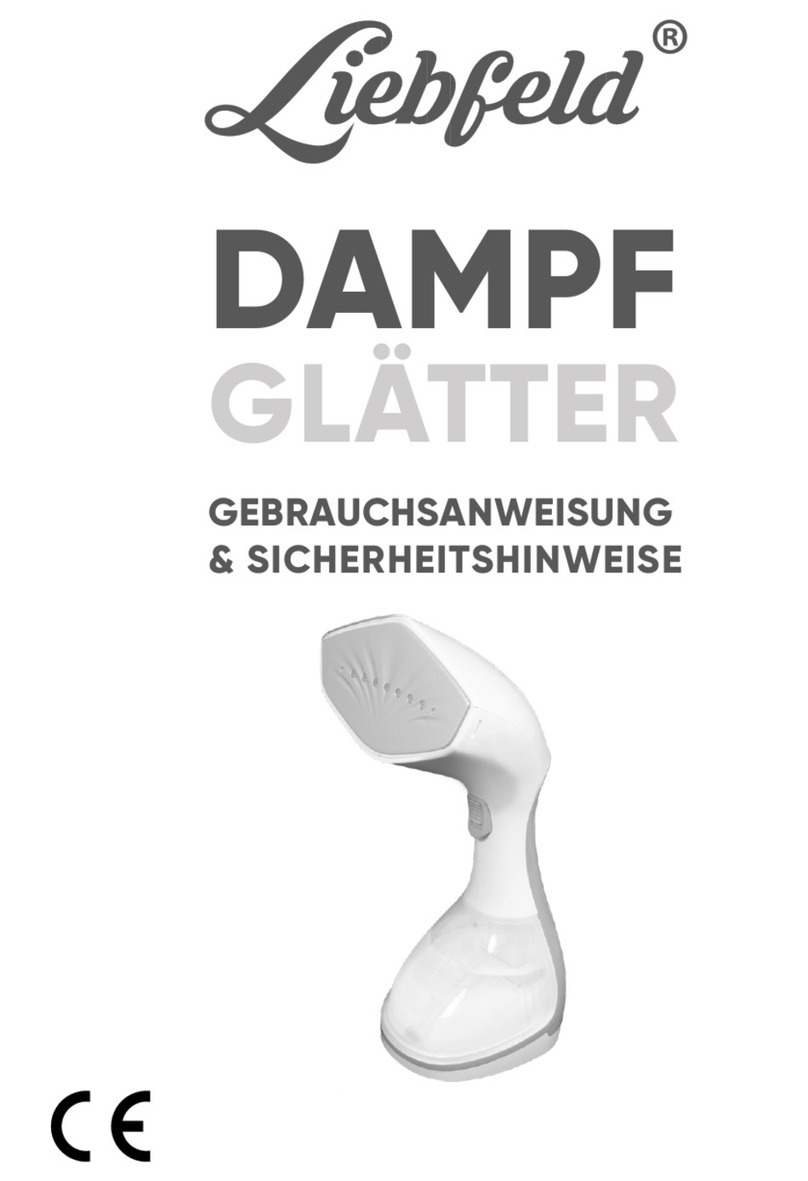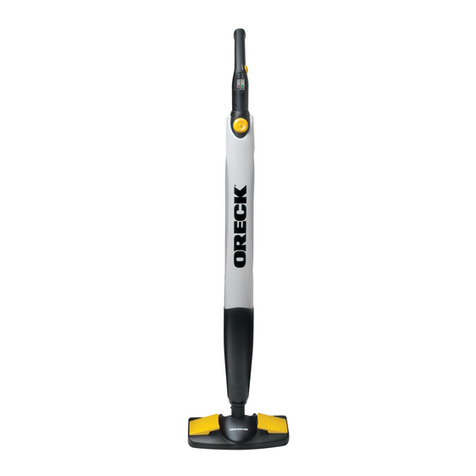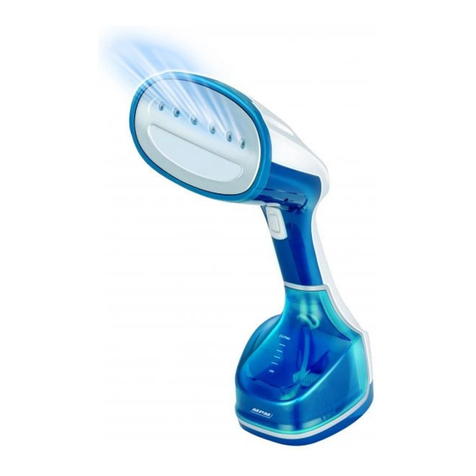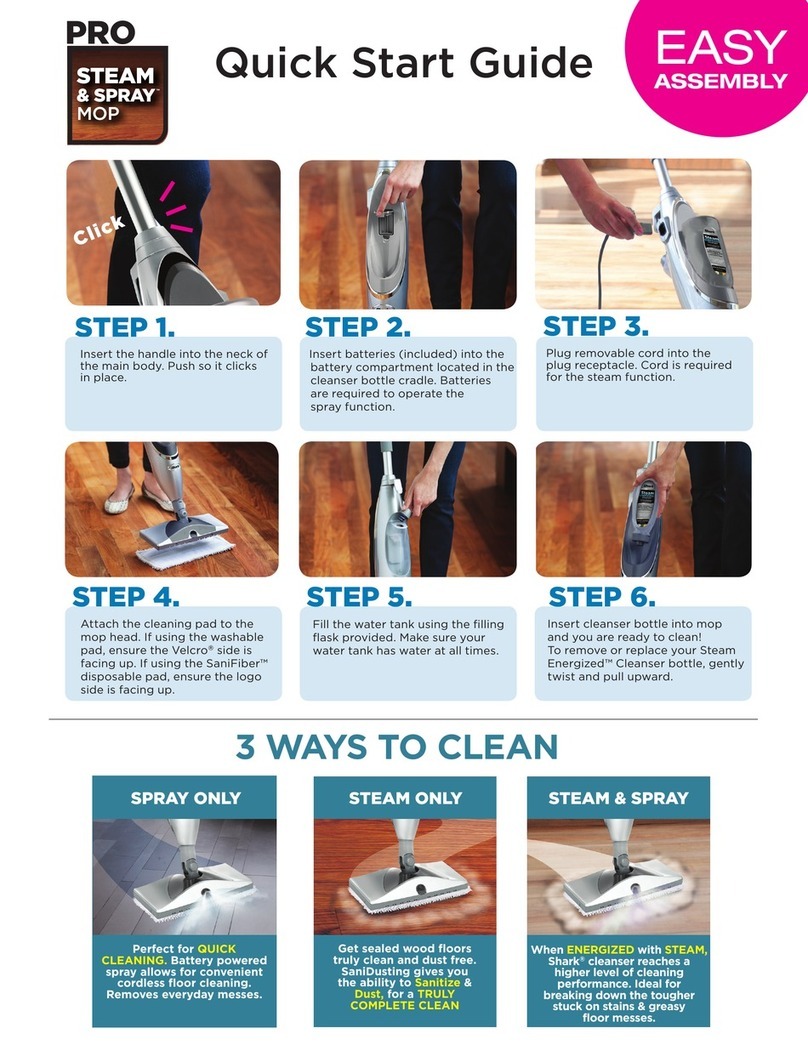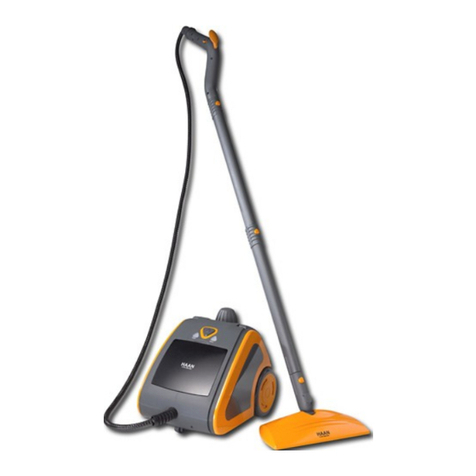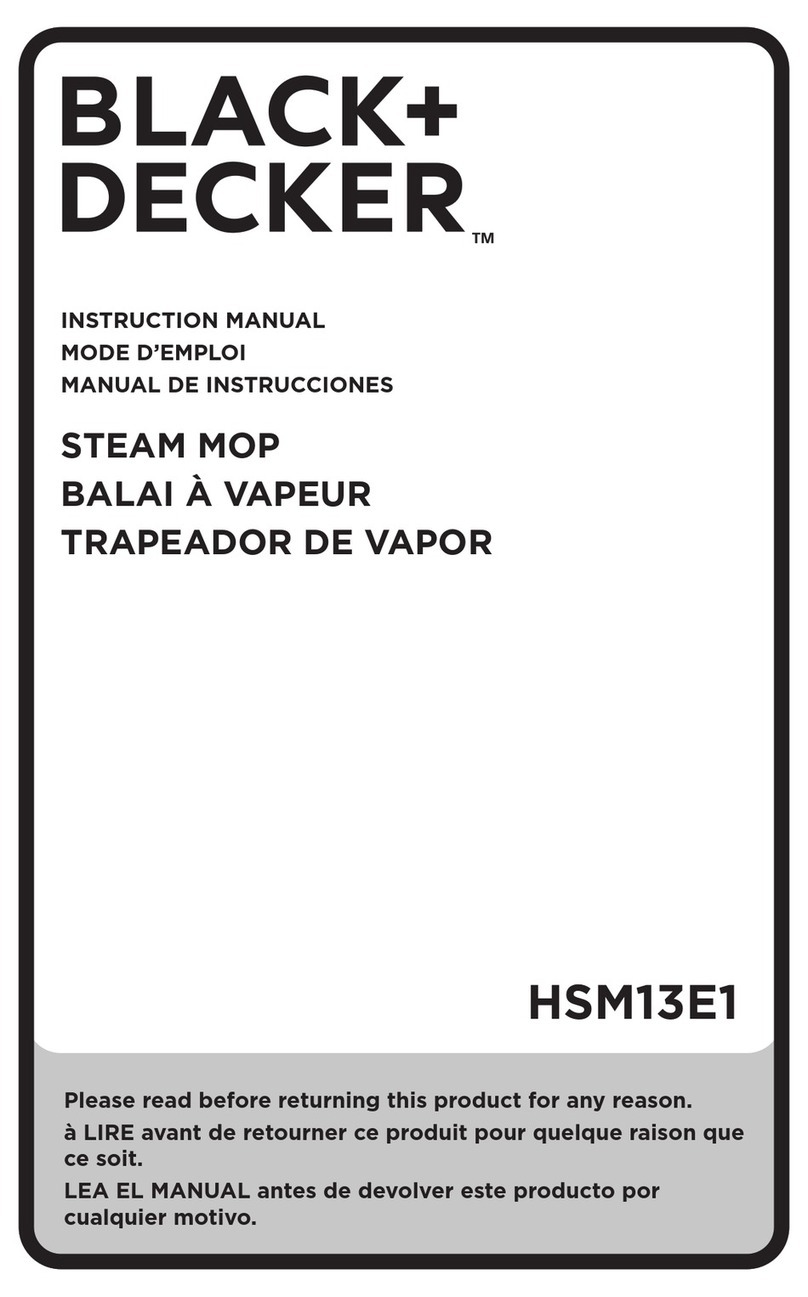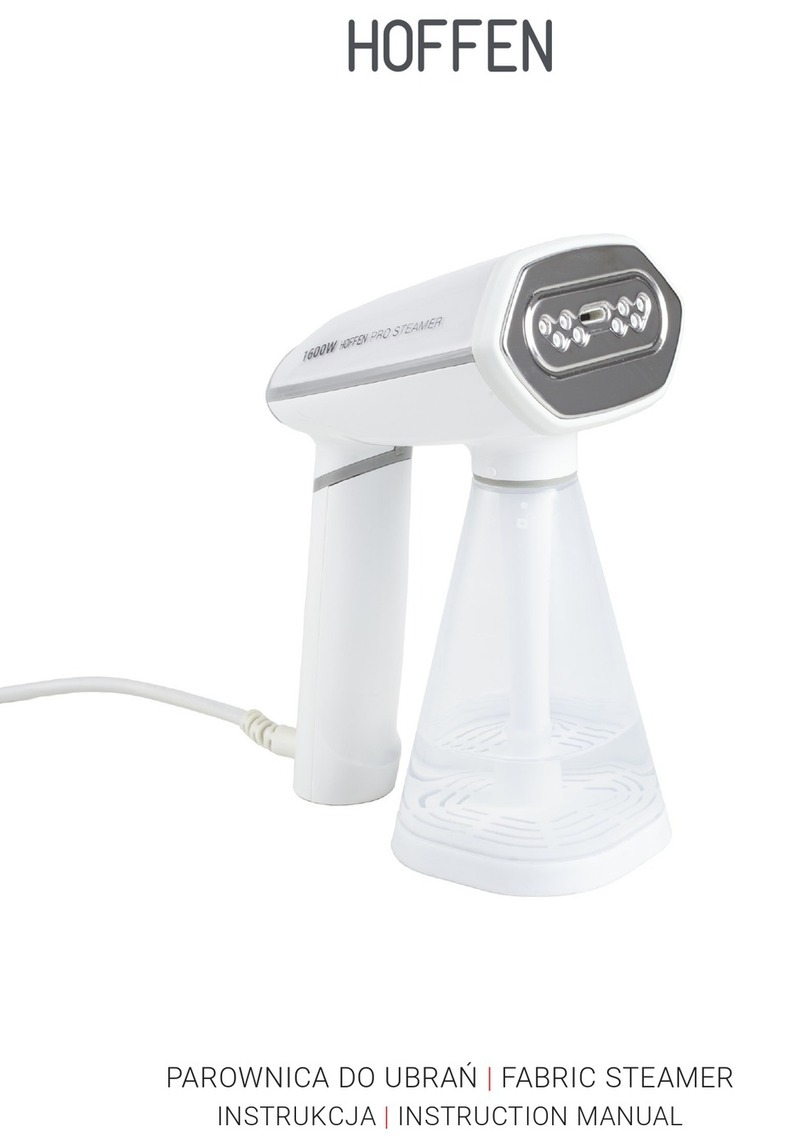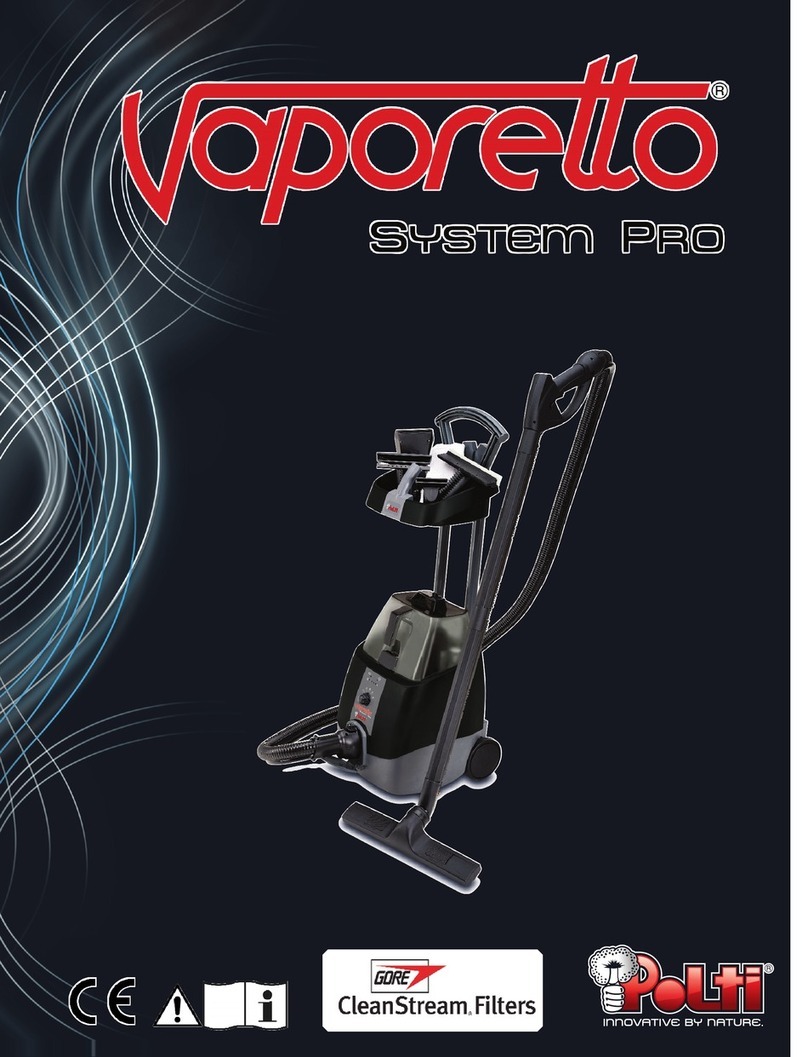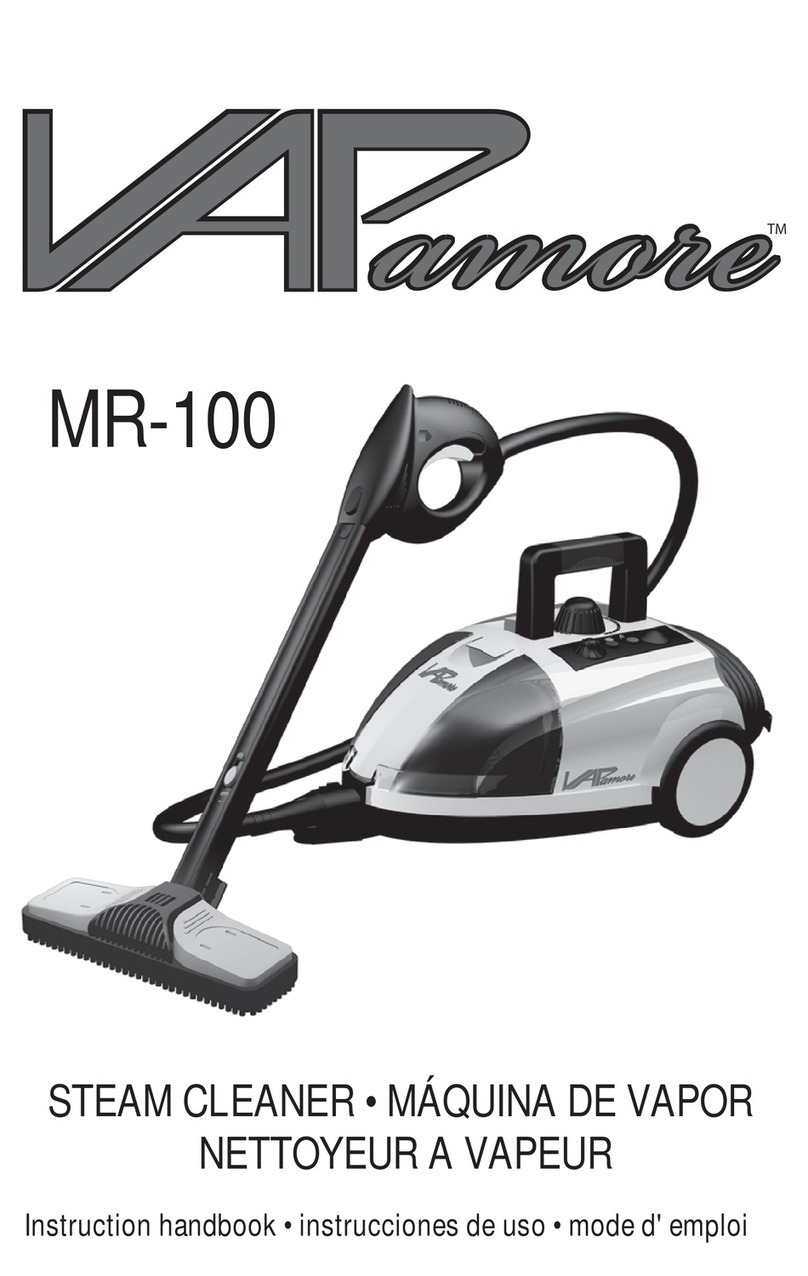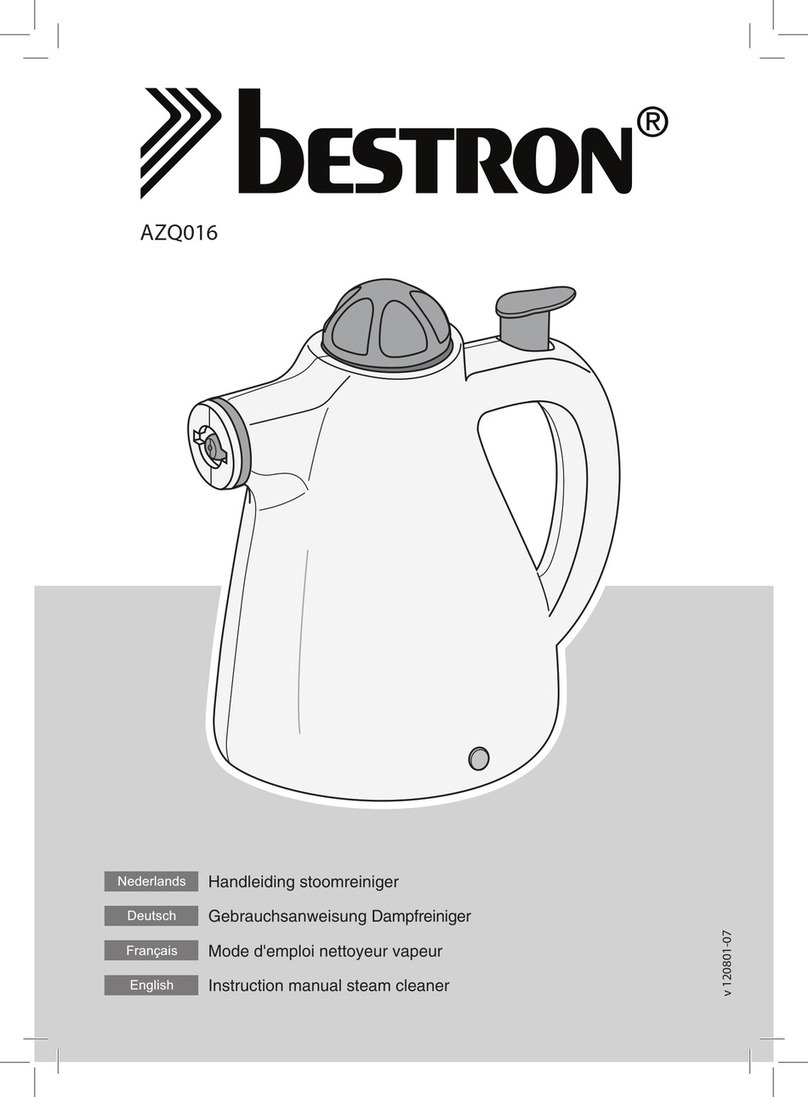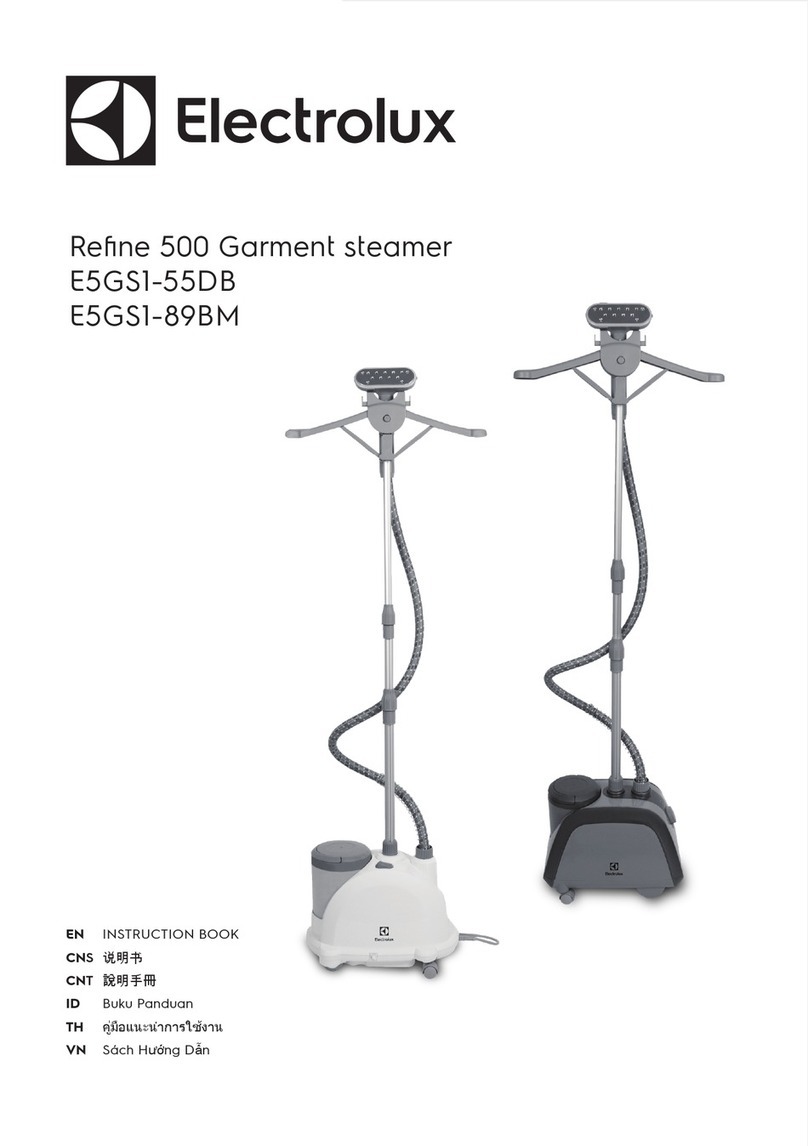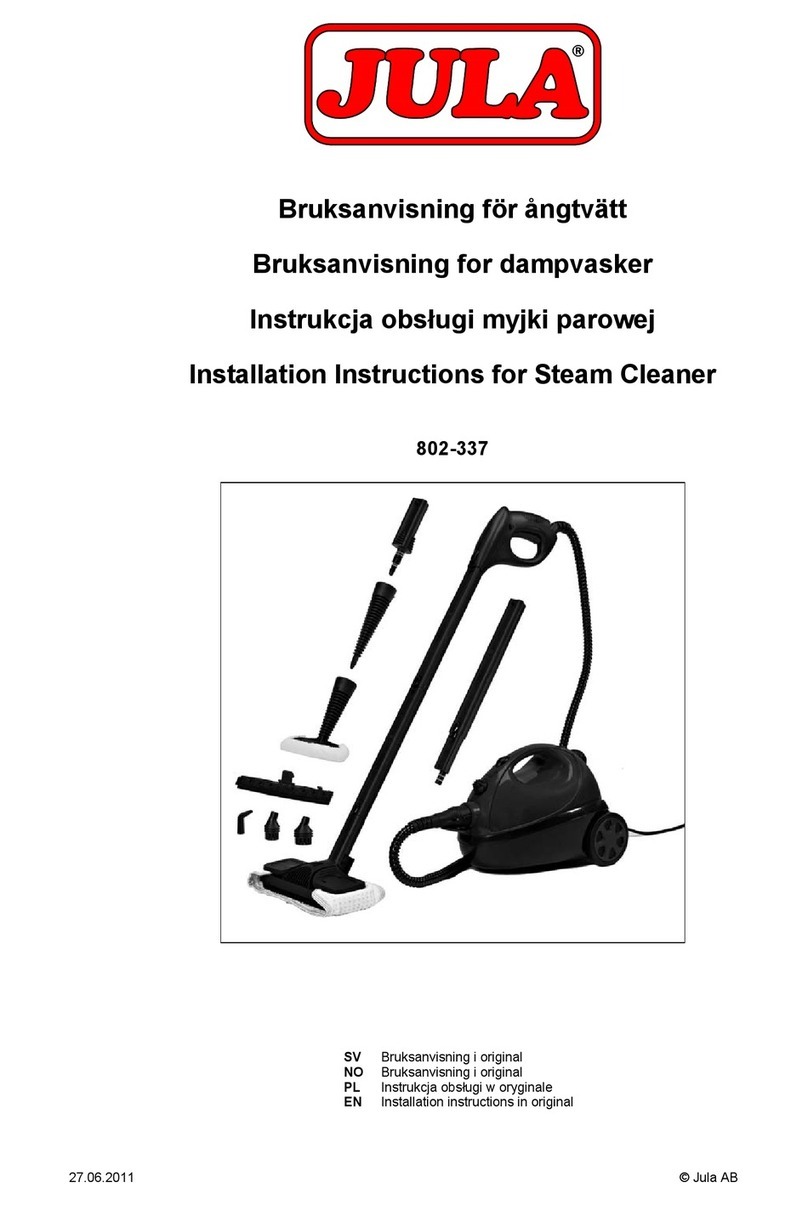7
3. Getting started
• When the orange lamp for the heater (A6)
goes out again, the cleaner is ready for use.
When the appliance is switched on, do
NOT place in a vertical position. To pre-
vent the appliance from overheating, a built-
in safety device isolates the appliance and all
indicator lights switch off. Place the ap-
pliance back in its original horizontal positi-
on. The indicator lights switch on again and
you can continue working.
• Switch off the heater before moving the cle-
aner.
• When you are ready to start work with the
cleaner, you must first release the locking
mechanism (child lock (C4)) on the steam
gun (C1), otherwise you will not be able to
operate the steam switch (C3). Slide the
locking mechanism forwards and you will
then be able to press the steam switch.
Note:
Slide the locking mechanism towards the
rear to engage the child lock whenever you are
not using the steam gun.
• When you press the steam switch, steam is
discharged from the nozzle. Begin by poin-
ting the steam gun at a cloth until a steady
flow of steam comes out of the nozzle.
• The heater is repeatedly switched on while
you are using the cleaner, in order to main-
tain the pressure inside the boiler. At the
same time the orange indicator lamp (A6) il-
luminates.
3.5 Regulating the volume of steam
Rotary knob for steam control (A4)
• You can adjust the steam quantity continuo-
sly by turning the rotary knob (A4).
Handwheel for steam control (C7)
• At first, set the rotary knob (A4) to the maxi-
mum steam quantity.
• The amount of steam can be regulated ac-
cording to requirement by adjusting the
handwheel (C7) on the steam gun. When the
wheel is turned forwards, a large amount of
steam is discharged; when it is turned to-
wards the rear, a small amount of steam is
discharged.
Note:
When the handwheel is set for minimum
steam, it is possible that steam will continue to
be discharged briefly after the steam switch
(C3) has been released, until the pressure in
the steam hose has dropped. You can accele-
rate this process by briefly turning the handw-
heel (C7) forwards.
3.6 Refilling with water
Note:
When the water in the boiler has been
used up, the red low-water warning lamp (A8)
will illuminate. The safety cap (A2) cannot be
opened while there is any pressure at all in the
boiler.
• Turn off the heater switch but leave the steam
supply switch on.
• Press the steam switch on the steam gun
and hold it pressed until steam is no longer
discharged from the nozzle. There will then
be no pressure inside the boiler.
• Unscrew the safety cap from the cleaner.
If the cleaner has been in continuous use for
a long time, the safety cap (A2) may be hot!
Caution: Never lift the cleaner by the handle
unless the safety cap is in place!
• Pour a maximum of 2 litres of tap water into
the boiler.
If the boiler is still hot, there is a risk that water
will be squirted back while it is being poured
into the boiler and cause scalding.
• Firmly screw the safety cap back onto the
cleaner. Turn on the heater switch again.
When the heater indicator lamp goes out,
the cleaner is ready for use again.
3.7 Switching the cleaner OFF
• Switch off both the heater and steam supply
switches.
• Unplug the cleaner from the mains.
• Lift up the cover on the main unit socket (A1)
and pull out the modular accessory plug
(C6).
• Any remaining water can be left inside the
cleaner.














